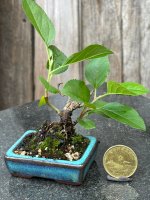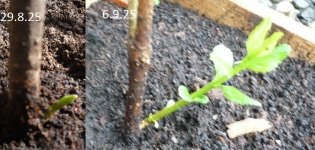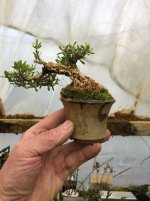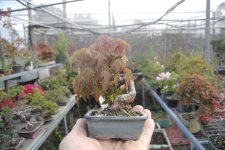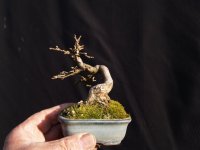The issue with rapid desiccation, dehydration, is not unique to the smallest bonsai. Any time the pot size (and this implies root mass) relative to the mass of foliage a tree is supporting becomes unbalanced, desiccation is a serious risk. A meter tall juniper in a very shallow pot, may also dry out just as quickly as a bean size Ficus. If you can only water once a day, you need to use larger pots, and allow larger soil media masses than if you had reliable 3 times a day watering service. Emphasis on reliable. For most of us this is a hobby, so we need to use larger pots relative to the small size of the tree to "buy time" to allow the tree to survive our ability to keep up a watering frequency. Once a day is my personal maximum. I increase the pot size for any tree that seems to dry out too quickly.
Some trees, like azalea and maples are pretty sensitive to a hard drying out. Drying out is fatal. One alternate approach is to work with species that tolerate drying out between watering. Here various desert shrubs and arid region species are advantageous. Most drought adapted species have some adaptations that pose challenges for bonsai, for example, pachycaul species (some trees, some shrubs) have a layer of spongy water storing tissue under their bark. This expands and contracts with moisture levels. This causes bark to exfoliate, an attractive feature in most, but creates issues when trying to shape by wiring. These are "best" as clip and grow. Some pachycaul species worth looking into are Bursera, Boswellia and Commiphora. Bursera is the source of copal resin, Boswellia is the source of frankincense resin and Commiphora is the source of myrrh. I have experience only with Bursera, and I find the fragrance delightful when working with it, repotting or pruning.
If kept cool and dry a Bursera with a one inch diameter base can go 4 months without water. They will drop their leaves during dry spells. If kept warm, above 60 F, (+15 C) and watered regularly they will grow fairly fast and keep their leaves. Bursera are opportunistic, they grow with heat and water, regardless of astronomical season.







